Case 07 AI Road Cards Identification Car
Introduction
This lesson will take students through the process of creating an AI road sign recognition cart using the Nezha Inventor's Kit V2 and the AI Accessories Pack. By learning about card recognition technology, students will be able to have the cart automatically adjust its driving route based on the recognised road sign information.
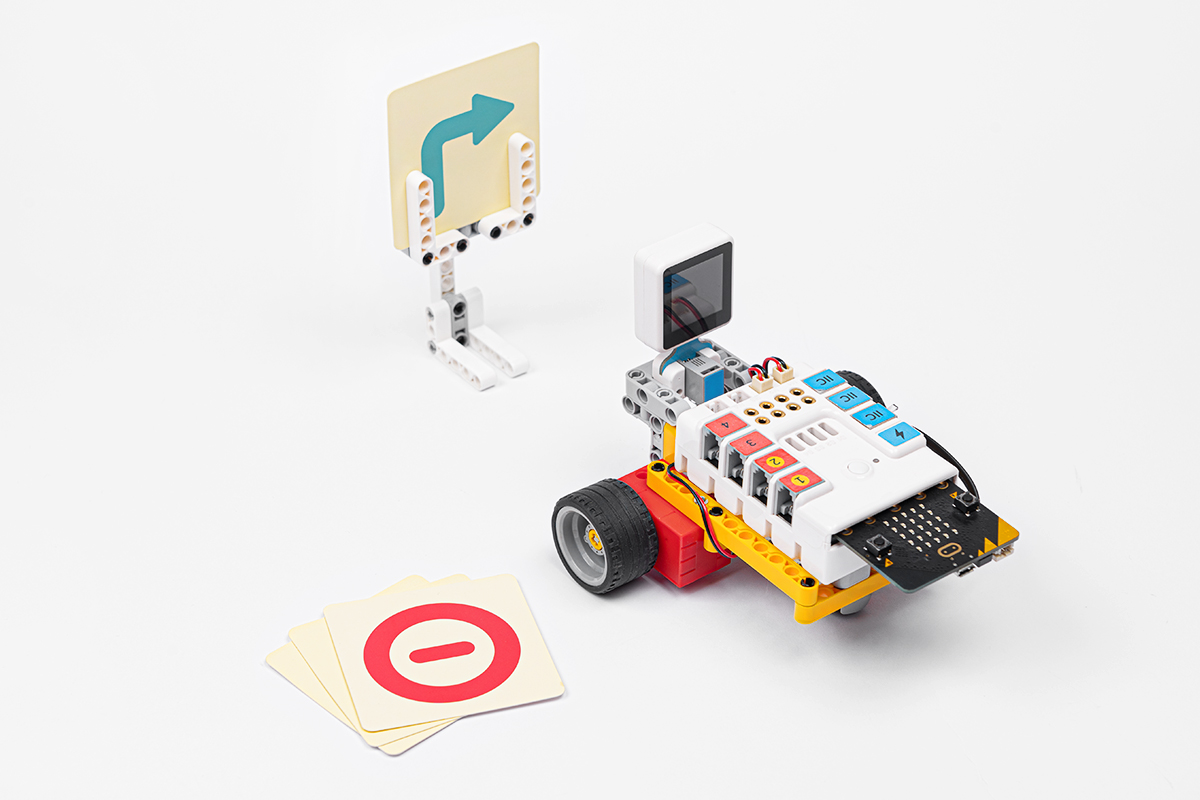
Teaching Objectives
- Understand the basic principles of card recognition.
- Learn to use the AI lens for card recognition.
- Master the method of combining card recognition with trolley control.
- Develop students' hands-on ability and innovative thinking.
Teaching Preparation
A computer
Teaching Process
Introduce
The teacher can guide students to think about the following questions: what is face recognition technology? What are its real-life applications? How can this technology be applied to an interesting device, such as a face tracking device? Through these questions, students' interest is stimulated and they are led to think about how to combine technology with creativity.
Hello everyone, today we will work together to make a very interesting cart. This cart can automatically recognise the information of road signs and automatically adjust the driving route according to the information of road signs. So, how is this card recognition cart achieved? Let's explore it together!
Exploration
In groups, students will be asked to think about how the AI lens can be used to create an AI road sign recognition vehicle, focussing on the use of the card recognition feature and the introduction of a driverless scenario.
- How does the AI lens recognise cards?
- How do you connect the AI lens to the cart controls?
- How to write a programme to implement card recognition and cart control?
- How to optimise the trolley's route and recognition accuracy?
How to optimise the route of the cart and its recognition accuracy?
Work in groups to build an AI road sign recognition vehicle using building blocks according to your own design scheme.
Work in groups to build an AI road sign recognition vehicle using building block materials according to your own design scheme.
Examples
Assembly Steps
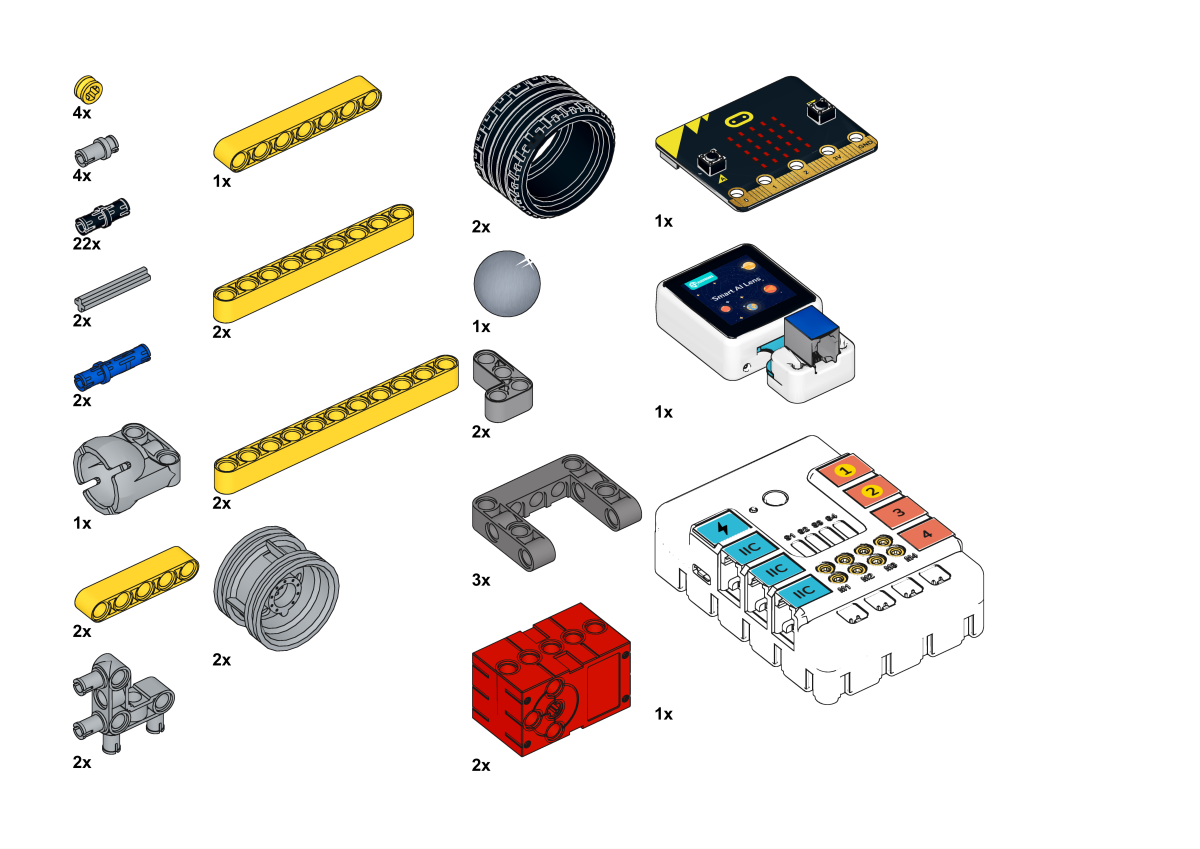
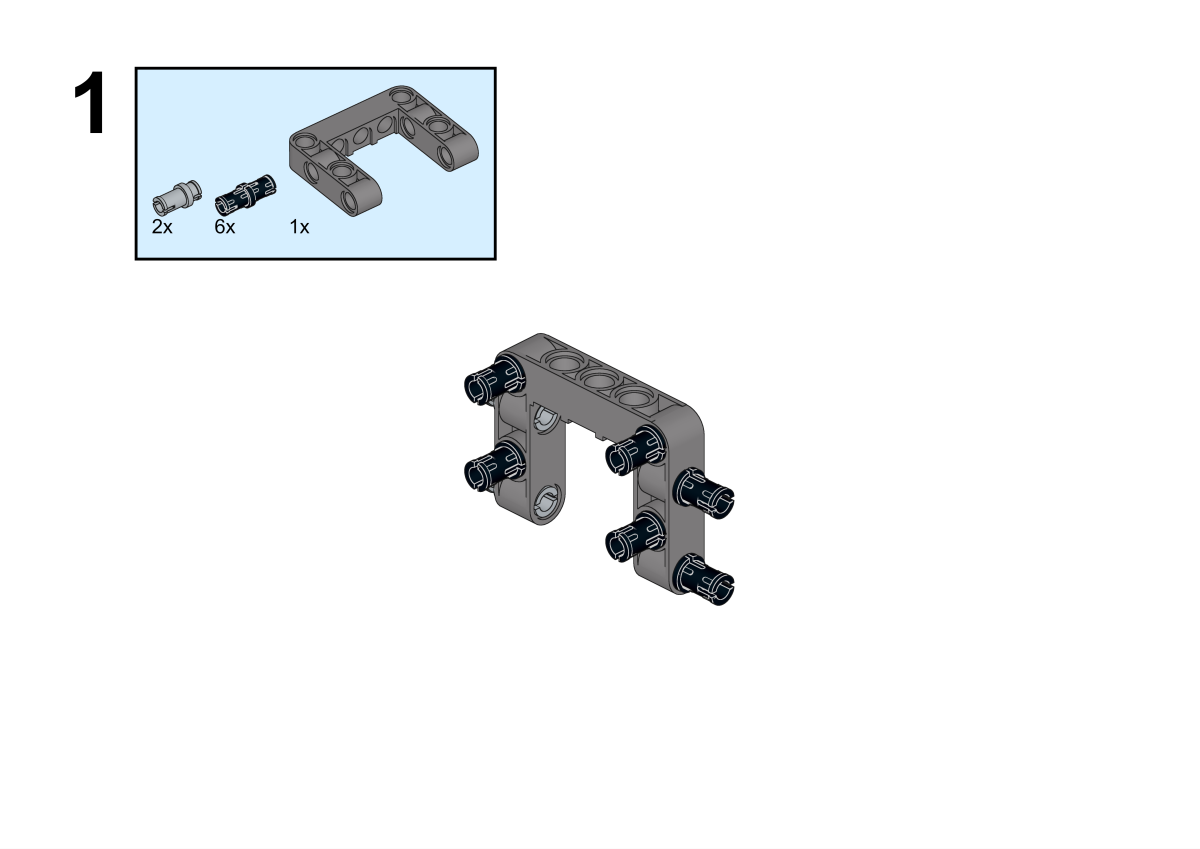
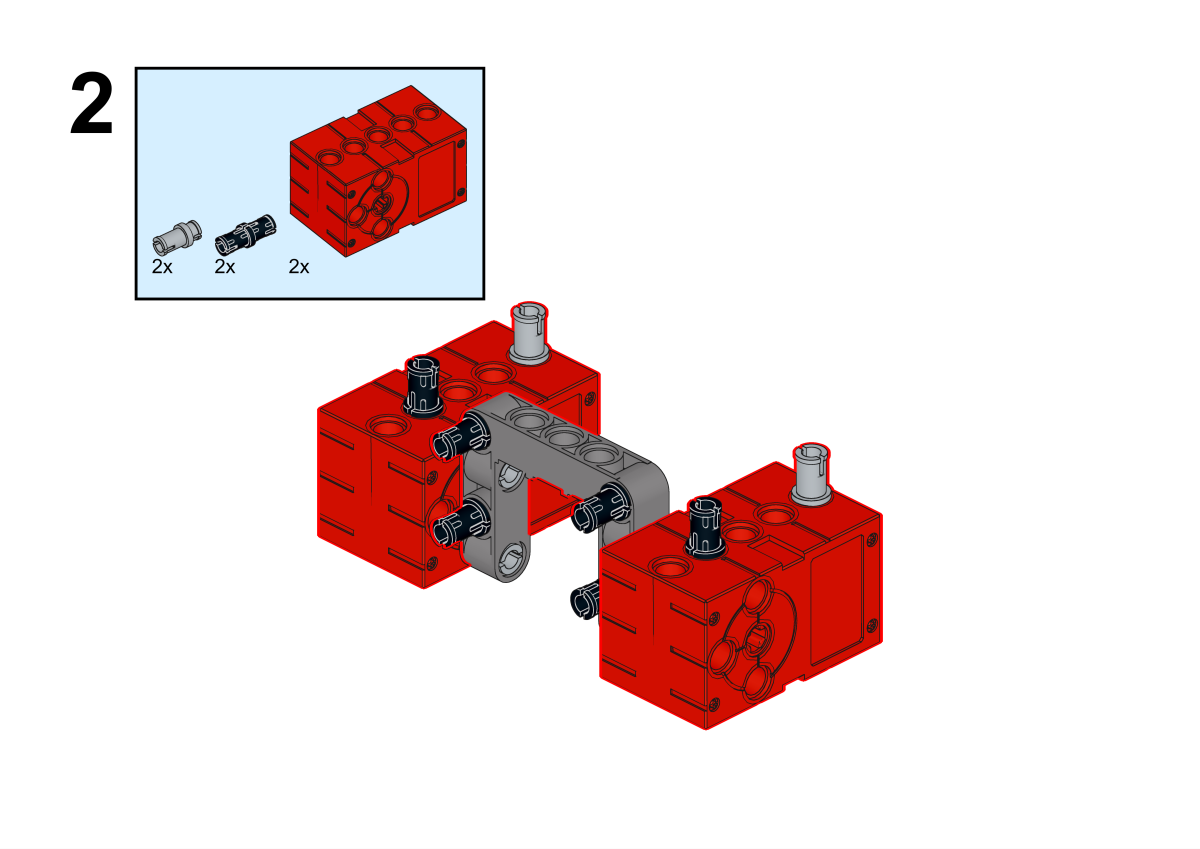


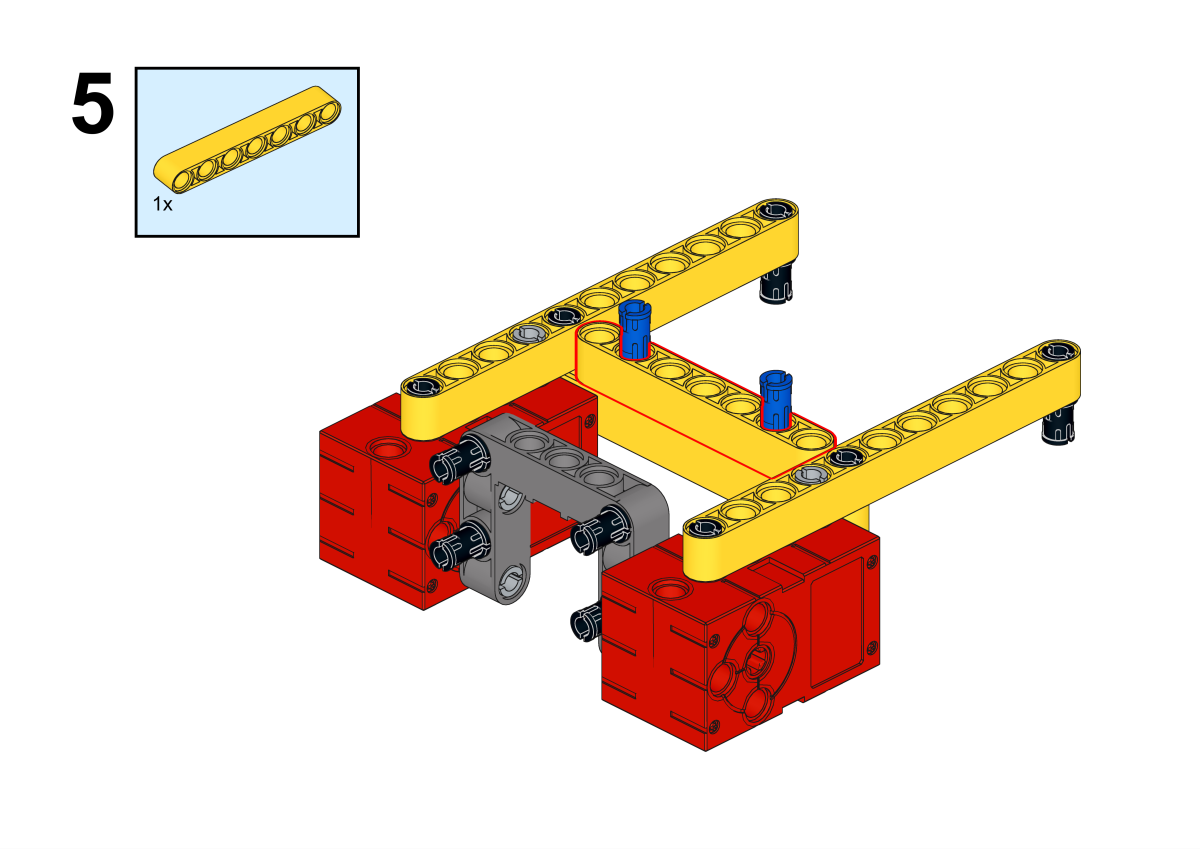
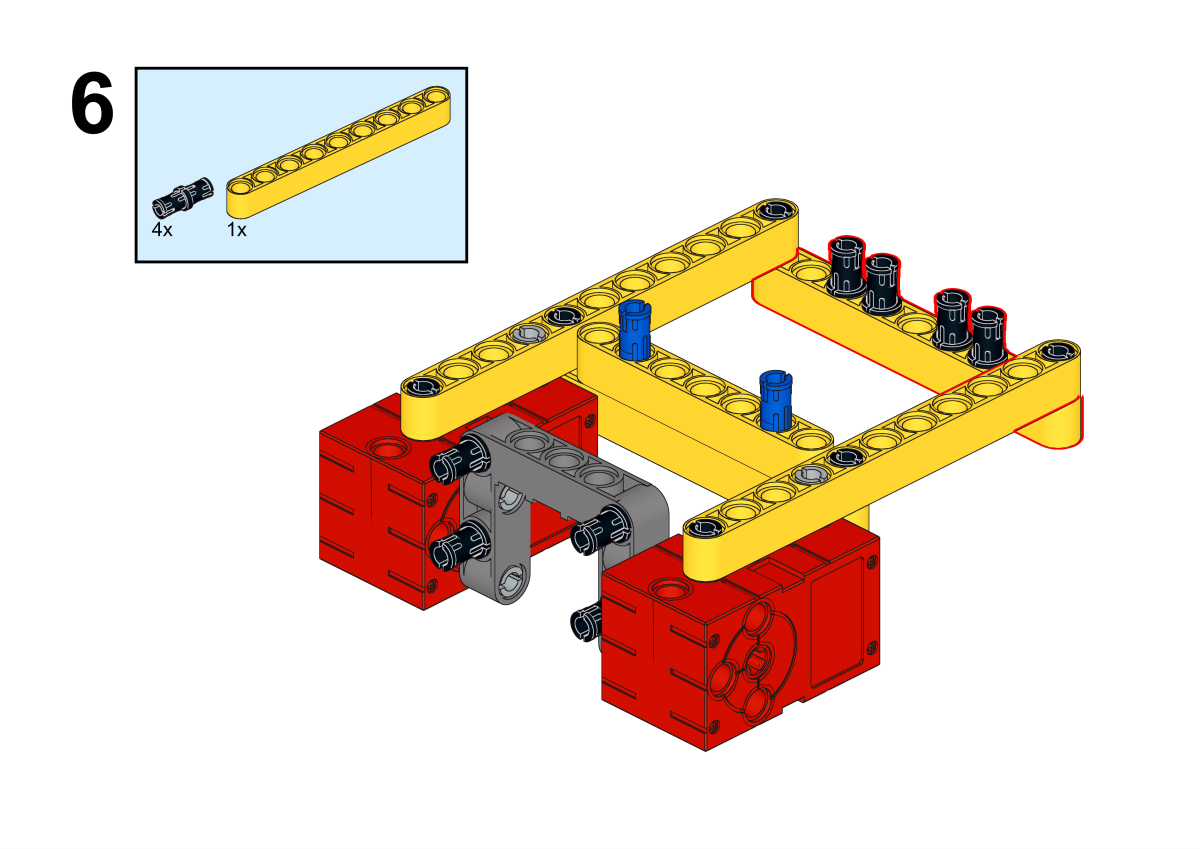








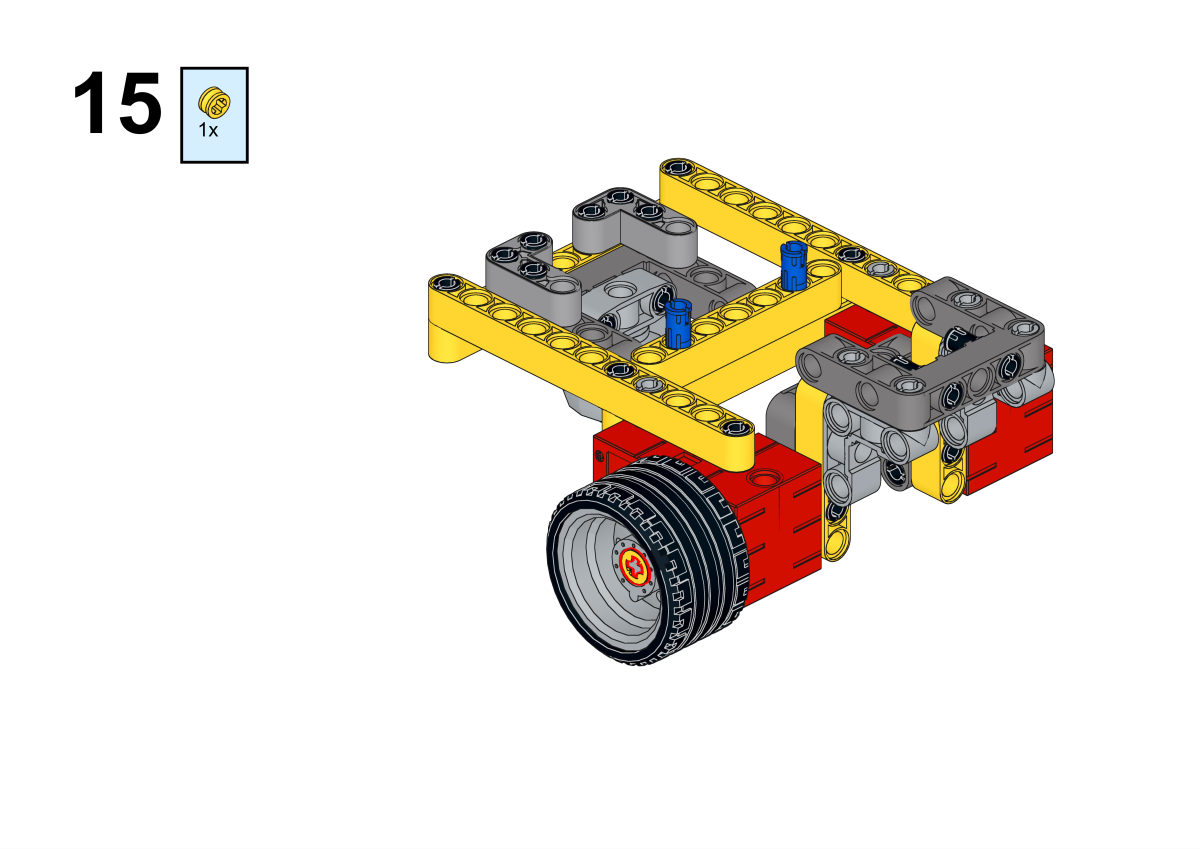

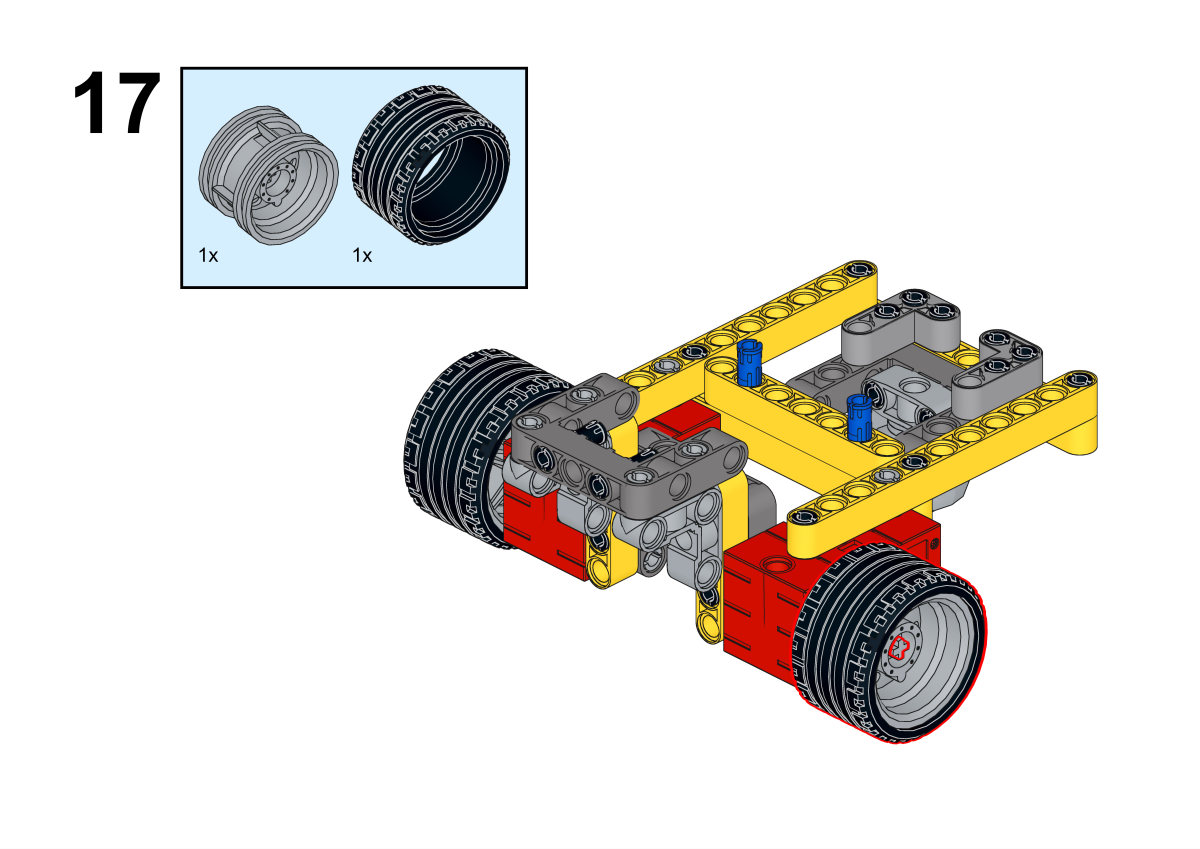


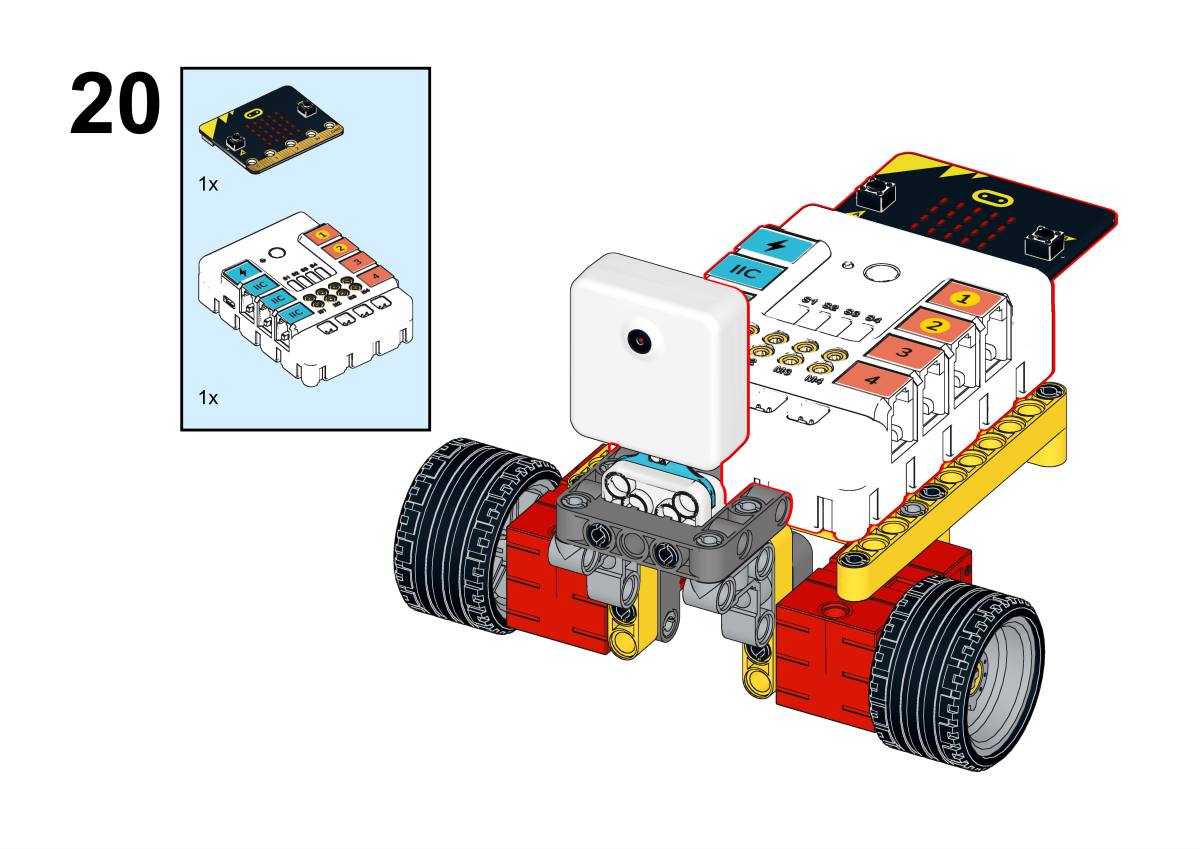
搭建完成

Hardware Connection
Connect the two motors to M1, M2, and the AI lens to IIC on the Nezha expansion board.
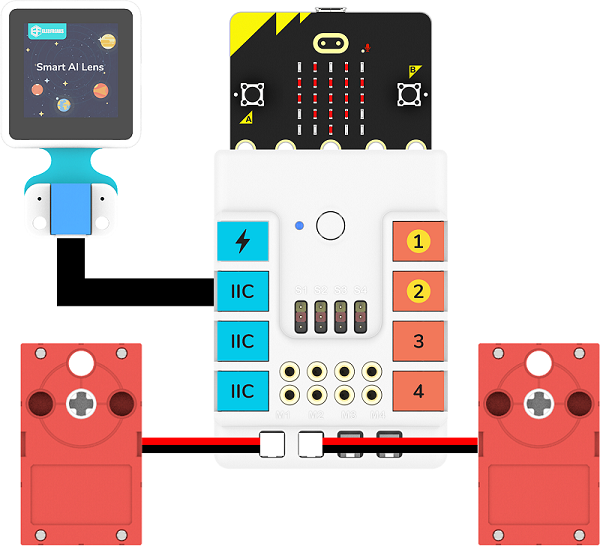
Software Programming
Go to makecode
Create New Project
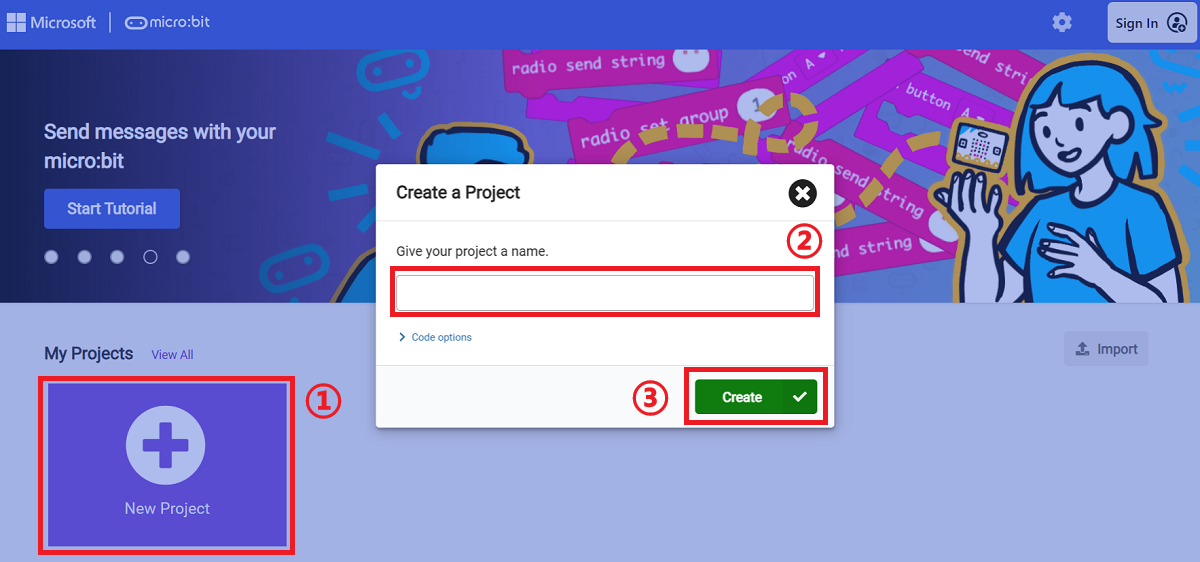
Click Extensions
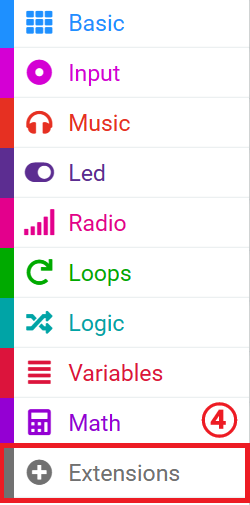
Search with nezha and download the package.
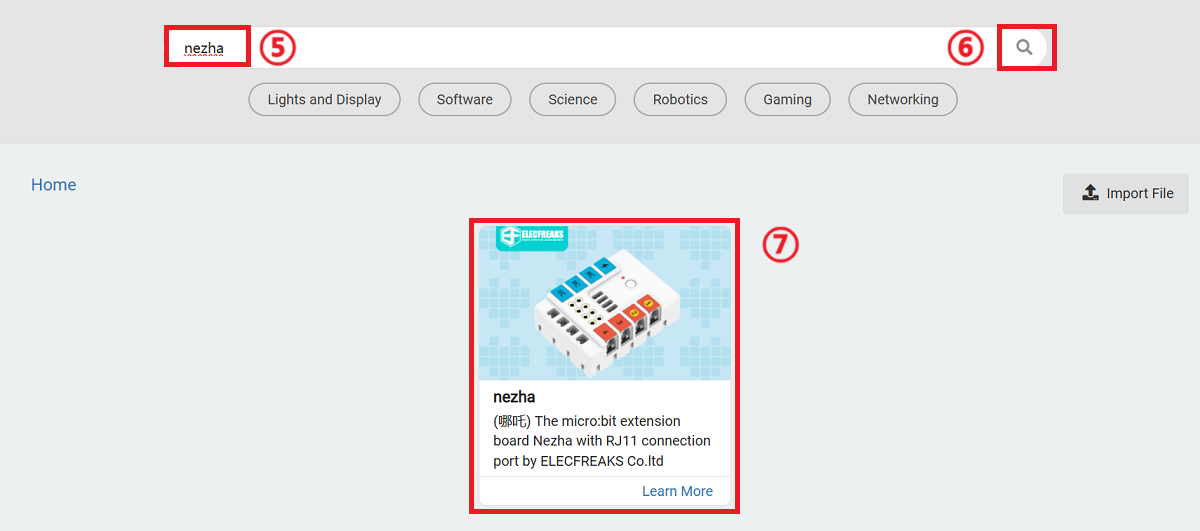
Search with planetx and download the package.
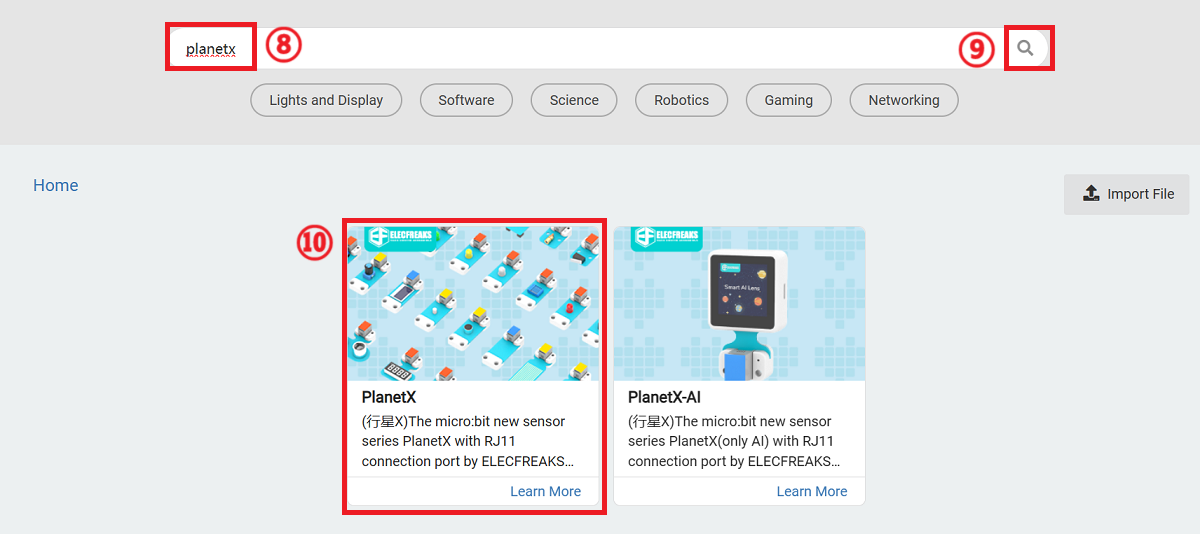
Code
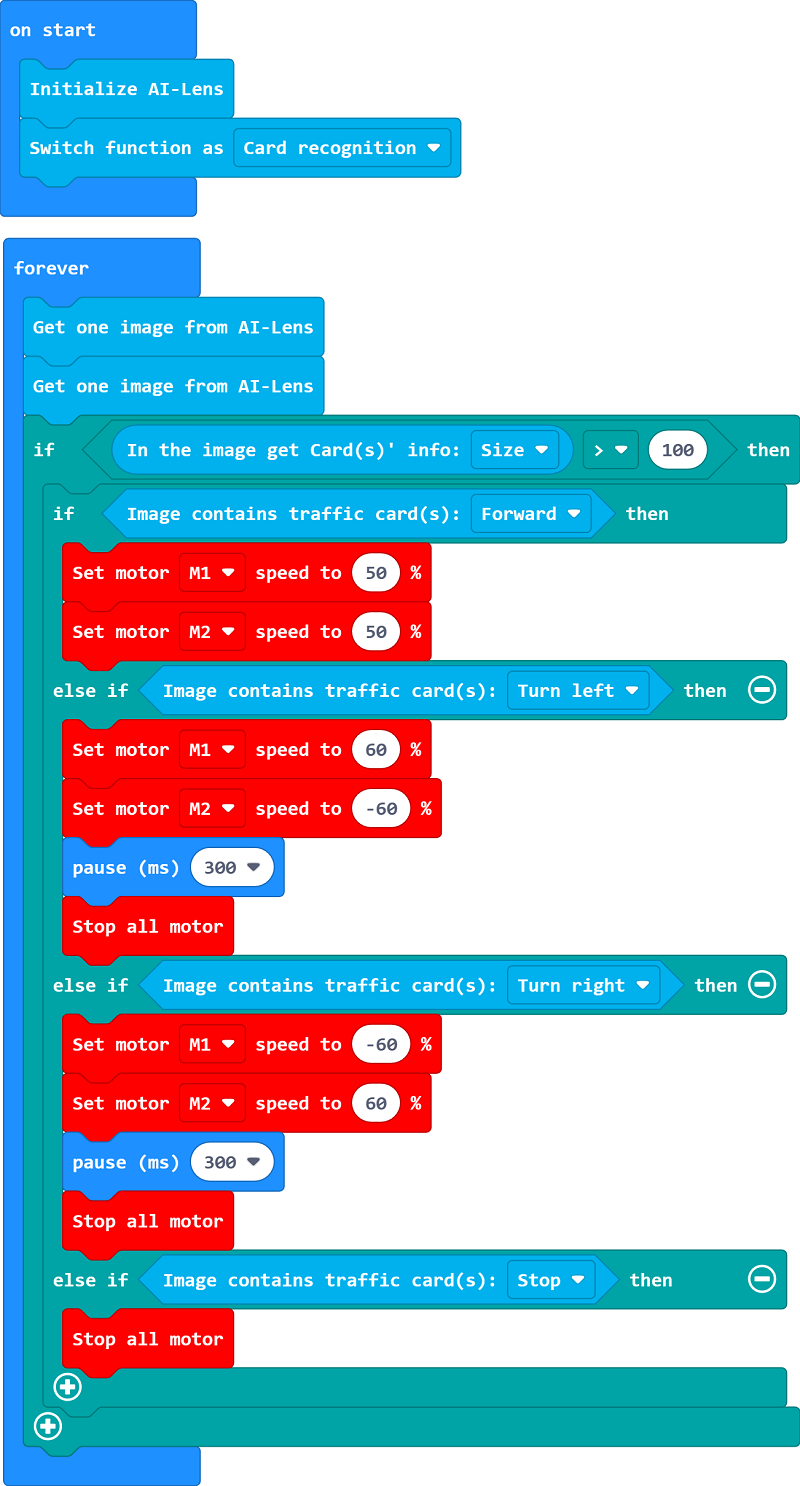
Link: https://makecode.microbit.org/_DhcWbYUAWYcK
You may download it directly below:
Teamwork and Presentation
Students are divided into teams to work together on the production and programming of the case.
Students are encouraged to co-operate, communicate and share their experiences with each other.
Each team has the opportunity to present the cases they have produced to other teams.
Example case effect
The car can automatically recognise the road sign information and automatically adjust its driving route according to the road sign information.

Reflection
Share in groups so that students in each group can share their production process and insights, summarise the problems and solutions they encountered, and evaluate their strengths and weaknesses.
Extended knowledge
Application Scenarios of Card Recognition Technology
In real life, card recognition technology has a wide range of applications. For example, in the logistics industry, card recognition technology can be used to automate the identification and processing of express order information to improve logistics efficiency. In the medical industry, card recognition technology can also be used to automate the identification and analysis of medical record information to improve the accuracy and efficiency of medical diagnosis. In addition, card recognition technology can be applied to identity authentication, payment verification and other fields. Students can further explore these application scenarios and think about how these technologies can be applied to more fields through innovation and creativity.
Driverless Technology
Driverless technology is a synthesis of several cutting-edge disciplines such as sensors, computers, artificial intelligence, communications, navigation and positioning, pattern recognition, machine vision, intelligent control, and so on. It involves knowledge from multiple fields, including computer vision, control theory, sensor technology, artificial intelligence, and so on. Driverless technology can be applied to automobiles, aircraft, rockets, space shuttles and other means of transport, and has very important practical value.
In the automotive field, driverless technology is used to develop self-driving cars. Such cars use a variety of sensors such as radar, lidar, cameras, inertial measurement units, etc., to sense the surroundings and make decisions and controls through computers. Driverless cars are able to perform operations such as steering, accelerating and braking automatically, thus making them driverless.
In addition to automobiles, driverless technology can also be applied to the field of aircraft. For example, drones can be flown and navigated using unmanned technology. They can be operated by remote control or autonomous flight mode, and can be used in aerial photography, logistics and distribution, agriculture and other fields.
In addition, in the field of aerospace, unmanned technology also has important applications. For example, when exploring outer space, unmanned spacecraft can use unmanned technology for autonomous navigation and exploration.
In conclusion, unmanned technology is a very complex and comprehensive technology that involves knowledge and technology from many fields. With the continuous development and progress of related technologies, unmanned technology will be applied and developed in more fields.